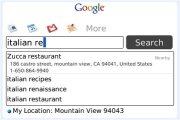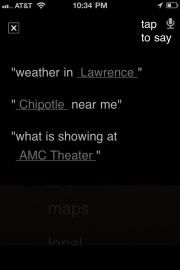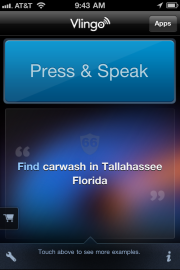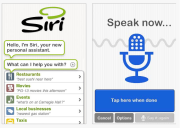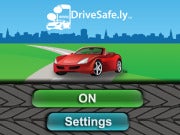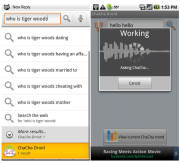It can be difficult keeping up to date with everything going on on twitter. To make sure you’re not missing anything, here are the top 40 dyslexia twitter handles.
If you think someone else should be on here, suggest them in the comments and we’ll add them
Charity – UK & Ireland
1.
@dyslexiaaction– A national education charity focused on improving lives. Currently running the #dyslexiamatters campaign calling for a national dyslexia strategy.
2.
@bdadyslexia– Another national dyslexia charity. Currently running (July 2012) a petition to force a compulsory module on dyslexia in teacher training, as there is currently none!
3.
@dyslexiafound– The handle of the dyslexia foundation, another leading dyslexia charity
4.
@DyslexiaScotlan– Dyslexia charity for Scotland
5.
@dyslexiaireland– The Dyslexia association of Ireland. Support for children and adults
6.
@dyslexialincs- Pioneering local body helping people reach their full potential. Check out their free dyslexia apps
7.
@dyslexiauk– A national UK charity, whose patron is Paul Smith
Charity – International
8.
@IntlDyslexia– Known for short as the IDA. US based charity providing information and services on dyslexia
9.
@LDOnline– Non profit organisation for students with learning difficulties and ADHD
10.
@HawaiiDyslexia– The Hawaii branch of the IDA
11.
@DyslexiaIndiana– For children, adolescents and adults, strategies that enable individuals to attain their full potential by learning to manage the challenges of dyslexia and benefit from its advantages.
Educators
12.
@dyslexiayale– Yale university dyslexia research centre. A MUST follow.
13.
@tes_sen– SEN teaching resources and lesson plans from UK based TES
14.
@dyslexiaumich– An amazing blog http://dyslexiahelp.umich.edu and information resource from the University of Michigan
People
15.
@dyslexicsonline– Run by Paul Grove, a dyslexic with ADD, currently investigating the way dyslexics use technology
16.
@elitheddc– a dyslexia consultant who is also a passionate fundraiser for dyslexia
17.
@neilmilliken– A technology expert who focuses on assistive technologies for those with disabilities. Also a passionate advocate for dyslexics, which is always nice!
18.
@claire_kinton– mum, author, fundraiser and dyslexia advocate
19.
@kgeeson– The chief exec of Dyslexia action. Passionate about dyslexia. Great person to follow to really understand the ins and outs of what’s going on in the dyslexia space
20.
@thedyslexicpoet– Run by Caroline Gardner, a strong dyslexia advocate. Also the 1st Publisher to EXCLUSIVELY develop, publish and promote dyslexic writers and artists, including Forgotten Letters, the 1st anthology.
Companies
21.
@dyslexia4u– A Scottish dyslexia consultancy who provide tutoring services but who are also advocates for change in the way dyslexia is identified and worked with
22.
@dyslexiax– Run by Steven Jones, an expert on dyslexia, their main site offers a dyslexia test facility plus other dyslexia resources
23.
@dyslexicadv- Run by two Doctors, both experts on dyslexia, they focus on tweeting interesting dyslexia resources and talk about the advantages and unlocking the potential of the dyslexic brain
24.
@dyslexiasupport– A Sheffield based assessment and tuition agency for children and adults
25.
@dyslexicbrian- Video Based Dyslexia Self-Development Programme
26.
@dyslexiamatter– A partnership working with children and adults to deal with dyslexia
27.
@being_dyslexic– Dyslexia information for people of all ages. They also have a great and really active forum http://www.beingdyslexic.co.uk/forums/
28.
@doreuk– focus on personalised exercise programs for those with dyslexia, dyspraxia and ADHD.
29.
@bristoldyslexia– Independent teaching and assessment centre. Currently running an awesome tips series on dyslexic parenting tips
30.
@letmelearn– dyslexia and dyscalulia shop run by Sue Kerrigan, herself a dyslexic, aswell as an entrepreneur, fundraiser and advocate
31.
@education_IEP– provide special education resources for #sped teachers and parents
32.
@geniuswithinltd– An online training platform for dyslexia and dyspraxia
33.
@dysconxs– Scotland based provider of dyslexia learning and social development
34.
@rudyslexice– Dyslexia organisation raising awareness
Tutors/Coaches/Experts
35.
@lindafox– Adult ADHD coach, also focused on dyslexia.
36.
@dyslexiarx– Dyslexia tester and tutor based in the US
37.
@drseide– One half of the folks behind ‘The Dyslexic Advantage’
38.
@cerirwilliams– A spLD and dyslexia teacher
Other
39.
@dyslexia_tweet– Lots of tweets, but seems to have gone a bit quietly recently
40.
@dyslexiadublin– Dublin based SpED educators
























